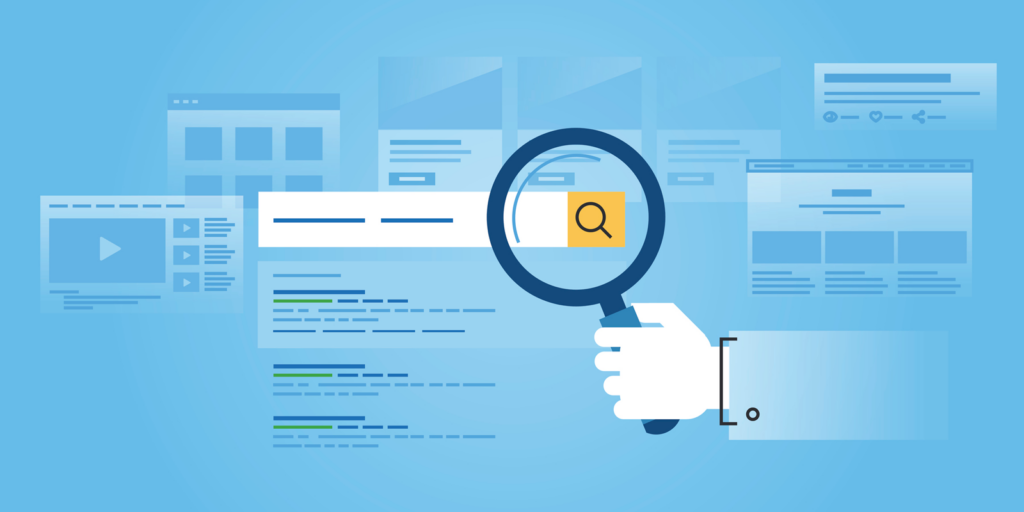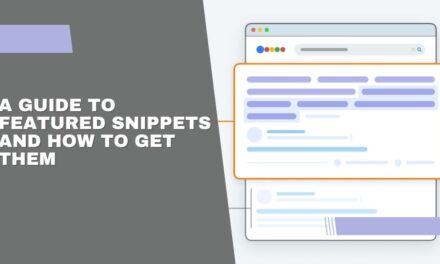Core Web Vitals are a collection of user experience metrics created by Google to assess users’ interaction with a website. Core Web Vitals were introduced in 2020 by Google as a key component of the page experience update, making them more crucial for SEO and overall website functionality. In the year 2024, these measurements remain essential in deciding the ranking of searches by evaluating the performance of websites through three main factors: how fast they load, how interactive they are, and their visual stability.
Google’s emphasis on user experience is motivated by its commitment to prioritizing websites that provide the optimal experience for users. The Core Web Vitals metrics, including Largest Contentful Paint, Interaction to Next Paint, and Cumulative Layout Shift, assess the speed of content loading, page responsiveness, and layout stability during usage. This indicates that businesses need to optimize their website performance in order to improve their search engine rankings, as a faster, more interactive, and visually stable site is crucial for success.
From 2020 to 2024, Core Web Vitals have evolved to keep up with changes in web technologies. One notable update in 2024 is the replacement of First Input Delay with INP, which provides a more comprehensive measure of interactivity. As SEO becomes more user-centric, Core Web Vitals have become inseparable from page experience, influencing how developers and marketers prioritize website improvements. Optimizing for these metrics can result in better user satisfaction and higher search visibility, making it a key factor for online success
Key Metrics of Core Web Vitals
Core Web Vitals are essential metrics introduced by Google to measure a website’s user experience. These metrics directly impact how well a website ranks on search engines, making them vital for site performance and SEO. In 2024, optimizing Core Web Vitals is crucial for ensuring a seamless user experience and maintaining competitiveness in search rankings. The key metrics focus on three main aspects: loading performance, interactivity, and visual stability.
1. Largest Contentful Paint (LCP): LCP is a metric that assesses the loading time of the biggest content element (like an image or a text block) on the page. A quick LCP score (2.5 seconds or shorter) provides users with confidence that the page is loading efficiently. In 2024, strategies to enhance LCP involve enhancing server response times, using CDNs, and optimizing large media files such as images and videos. These actions decrease loading times, improving user satisfaction and enhancing page functionality.
2. First Input Delay (FID): FID measures the time it takes for a page to respond to a user’s first interaction, such as clicking a button. In 2024, FID has been replaced by Interaction to Next Paint, which evaluates overall interactivity. A good INP score indicates that a site remains responsive throughout a session. Optimizing JavaScript execution and reducing tasks that block the main thread can significantly enhance interactivity, making the page feel faster and more responsive.
3. Cumulative Layout Shift (CLS): CLS assesses how steady a webpage is visually. A score of 0.1 or lower guarantees that the page design remains consistent during loading, avoiding users from mistakenly clicking on incorrect elements. In order to improve CLS, developers need to allocate space for images, ads, and fonts prior to their complete loading. This helps avoid abrupt changes and guarantees a more seamless browsing experience on any device.
4. New or Updated Metrics (2024): The most significant update in 2024 is the introduction of Interaction to Next Paint, which has replaced FID as a Core Web Vital metric. INP provides a more comprehensive measurement of interactivity, ensuring that websites remain responsive beyond the first user interaction, enhancing the overall user experience.

Why Core Web Vitals Matter for Rankings
Core Web Vitals are critical to Google’s ranking algorithm as they directly measure a website’s user experience. Since the page experience update, these metrics have become vital in determining a website’s position in search results. The focus on page speed, interactivity, and visual stability means that websites must optimize for user satisfaction to maintain strong rankings.
The Role of User Experience in Search Engine Rankings: User experience is now a crucial part of SEO. Core Web Vitals—LCP, INP, and CLS—are used to evaluate the loading performance, responsiveness, and visual stability of a webpage. Websites that provide fast and seamless experiences tend to rank higher in search engine results, as Google prioritizes sites that deliver better UX. In 2024, optimizing for these metrics is not just about improving site speed but ensuring a positive user experience across devices.
How Core Web Vitals Fit into Google’s Broader Algorithm: Core Web Vitals are a component of Google’s wider ranking factors, which encompass mobile compatibility, security via HTTPS, and lack of intrusive interstitials. Collectively, these elements aid Google in determining the overall excellence of a website. When businesses optimize for Core Web Vitals, they enhance their website performance and boost their likelihood of ranking higher in search engine results pages.
Strategies to Improve Core Web Vitals for 2024
Improving Core Web Vitals is essential for enhancing both user experience and search engine rankings. The focus is on optimizing three key metrics: LCP, INP (formerly First Input Delay), and CLS. Here are some strategies to improve these metrics in 2024.
Best Practices for Reducing LCP, INP, and CLS: To reduce LCP, it’s essential to optimize server response times, compress images, and prioritize the loading of important content. Utilizing techniques like lazy loading for non-essential elements can help reduce the initial load time. For INP, improving interactivity is key. Reducing JavaScript execution time and removing unnecessary third-party scripts will ensure faster response times to user interactions. To optimize CLS, set explicit size attributes for images and ads, and avoid dynamic content that shifts the layout unexpectedly during loading.
Leveraging Modern Web Technologies: Core Web Vitals can be greatly enhanced by technologies such as Accelerated Mobile Pages (AMP) and lazy loading. AMP assists in developing light pages that load quickly, especially on mobile devices, leading to enhanced LCP. Lazy loading makes sure that images and other media are not loaded until the user reaches them by scrolling, leading to faster loading of initial content and reducing visual changes. Loading assets ahead of time, such as fonts and important images, can additionally boost both LCP and INP, increasing overall website efficiency.
Responsive Design and Mobile Optimization: Responsive design is crucial for improving Core Web Vitals, particularly with the increasing focus on mobile-first indexing. Ensuring your site adapts seamlessly across different screen sizes helps reduce layout shifts (improving CLS) and enhances the overall page experience. Mobile optimization, including faster hosting and smaller media sizes, also plays a vital role in delivering smooth, fast-loading pages that perform well on Google’s ranking algorithm.
Tools and Resources for Monitoring and Enhancing Core Web Vitals
Monitoring and improving Core Web Vitals is crucial for ensuring a smooth user experience and maintaining strong SEO performance. Several tools are available to help website owners optimize their site’s performance and address key metrics such as LCP, INP, and CLS.
Google’s Tools: PageSpeed Insights, Lighthouse, and Search Console: Google provides a suite of free tools to monitor and enhance Core Web Vitals. PageSpeed Insights evaluates both mobile and desktop performance, providing recommendations for improving LCP, INP, and CLS. It uses real-world data from the Chrome User Experience Report (CrUX), making it an excellent resource for assessing page experience updates. Lighthouse, available in Chrome’s developer tools, offers more in-depth insights, including lab data that allows developers to test site performance under simulated conditions. Finally, Google Search Console helps track Core Web Vitals across your entire site, flagging pages that need optimization and providing field data to guide improvements.
Third-Party Tools for Deeper Analysis: For a more in-depth analysis of performance, tools such as GTmetrix and WebPageTest are extremely helpful. GTmetrix offers a thorough analysis of loading speeds and aids in identifying areas that may be slowing down performance, while WebPageTest provides more advanced testing features like mimicking various devices and network environments. These tools assist website owners in pinpointing precise areas for Core Web Vitals enhancement, ranging from server response times to optimizing images.
Using Data-Driven Insights for Continuous Improvements: By regularly monitoring performance through these tools, businesses can make data-driven decisions to enhance their website’s UX SEO. Tracking changes over time allows for ongoing improvements, ensuring that Core Web Vitals remain optimized even as website content evolves.
The Impact of Core Web Vitals on User Experience
Optimizing Core Web Vitals directly enhances a website’s usability, which leads to better user retention and higher conversion rates. These metrics—LCP, INP, and CLS—focus on improving how quickly a website loads, responds to user interactions, and maintains visual stability. Faster loading times and a smooth browsing experience encourage users to stay longer on a site, reducing bounce rates and increasing the likelihood of conversion. When websites load faster, users are more likely to engage, ultimately improving the overall user experience and leading to higher customer satisfaction.
Improving Core Web Vitals is crucial for performance, but it’s also important to maintain a balance with aesthetics and content quality. An attractive website with interesting content needs to have fast loading speed and consistent stability. Putting all the emphasis on speed and neglecting design and user experience could result in a dull or unsatisfying website. Finding the perfect equilibrium guarantees that users are not only amazed by the speed at which a website loads, but are also captivated by its content and design, improving overall user experience which enhances both retention and conversions.

Preparing for Future Changes in Core Web Vitals
As the web continues to evolve, Core Web Vitals will likely see further updates to better reflect the growing importance of user experience. One significant update for 2024 is the introduction of Interaction to Next Paint, which replaces First Input Delay (FID) to provide a more comprehensive measure of interactivity. Looking ahead, Google may continue refining these metrics, incorporating new factors to measure aspects like content relevance and deeper user engagement. As mobile usage continues to dominate, future updates may place an even greater emphasis on mobile performance and real-time user interactions.
How Businesses Can Stay Ahead: To stay competitive, businesses need to monitor updates to Core Web Vitals and adjust their strategies accordingly. Investing in tools like Google Search Console and PageSpeed Insights allows businesses to track performance metrics and respond swiftly to changes. Incorporating modern technologies, such as lazy loading, CDNs, and responsive design, ensures that websites are well-equipped to handle both current and future demands. Staying informed about upcoming algorithm updates, particularly those affecting UX SEO, helps businesses anticipate shifts in ranking factors and make proactive improvements.
Continuous Optimization is Key: Improving web performance is a continuous process, not something that is done once and forgotten. Businesses need to consistently evaluate their site performance, improve speed, and enhance user experience as Core Web Vitals progress. This continual method guarantees that websites stay in sync with Google’s ranking standards and provide users with the optimal experience, enabling them to stay competitive in the extended period.
Conclusion
Core Web Vitals in 2024 are essential for enhancing user experience and SEO performance. By concentrating on maximizing these measures, companies can guarantee their websites load quicker, operate more seamlessly, and uphold visual consistency. Giving priority to Core Web Vitals assists businesses in maintaining competitiveness and improving their overall online visibility.












